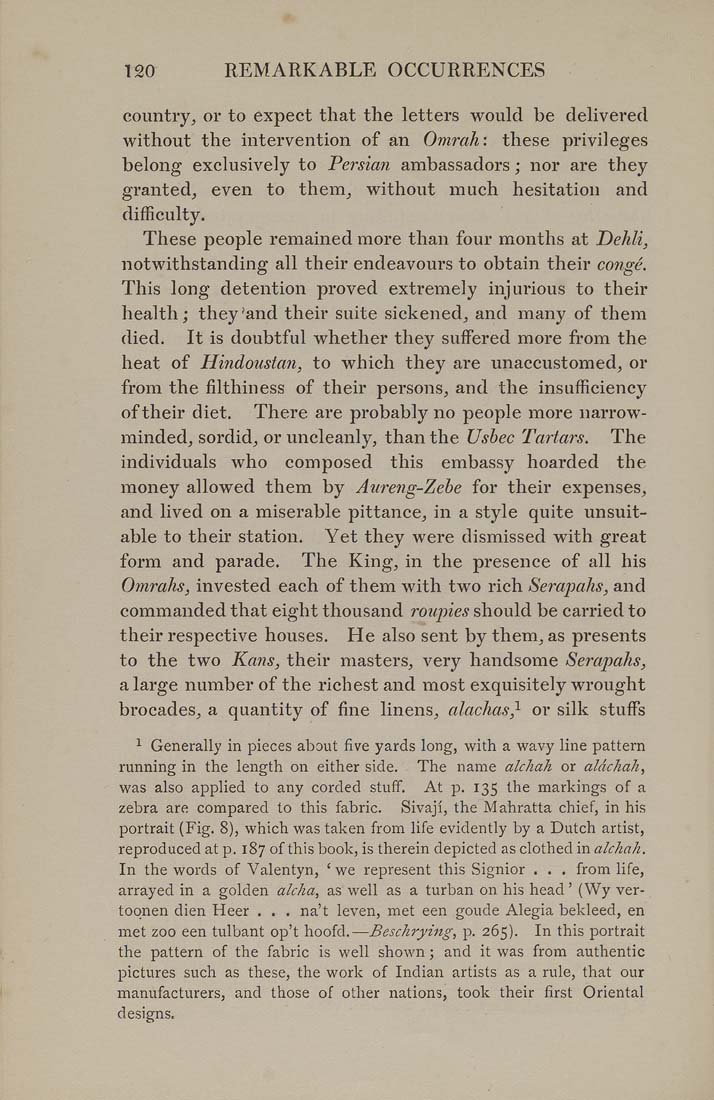120 REMARKABLE OCCURRENCES
country, or to expect that the letters would be delivered
without the intervention of an Omrah: these privileges
belong exclusively to Persian ambassadors; nor are they
granted, even to them, without much hesitation and
difficulty.
These people remained more than four months at Dehli,
notwithstanding all their endeavours to obtain their conge.
This long detention proved extremely injurious to their
health; they'and their suite sickened, and many of them
died. It is doubtful whether they suffered more from the
heat of Hindoustan, to which they are unaccustomed, or
from the filthiness of their persons, and the insufficiency
of their diet. There are probably no people more narrow-
minded, sordid, or uncleanly, than the Usbec Tartars. The
individuals who composed this embassy hoarded the
money allowed them by Aureng-Zebe tor their expenses,
and lived on a miserable pittance, in a style quite unsuit¬
able to their station. Yet they were dismissed with great
form and parade. The King, in the presence of all his
Omrahs, invested each of them with two rich Serapahs, and
commanded that eight thousand roujnes should be carried to
their respective houses. He also sent by them, as presents
to the two Kans, their masters, very handsome Serapahs,
a large number of the richest and most exquisitely wrought
brocades, a quantity of fine linens, alachasj or silk stuffs
! Generally in pieces about five yards long, with a wavy line pattern
running in the length on either side. The name alchah or aldchah,
was also applied to any corded stuff. At p. 135 the markings of a
zebra are compared to this fabric. Sivajf, the Mahratta chief, in his
portrait (Fig. 8), which was taken from life evidently by a Dutch artist,
reproduced at p. 187 of this book, is therein depicted as clothed in alchah.
In the words of Valentyn, 'we represent this Signior . . . from life,
arrayed in a golden alcha, as well as a turban on his head' (Wy ver-
toqnen dien Heer . . . na't leven, met een goude Alegia bekleed, en
met zoo een tulbant op't hoofd.—Beschrying, p. 265). In this portrait
the pattern of the fabric is well shown; and it was from authentic
pictures such as these, the work of Indian artists as a rule, that our
manufacturers, and those of other nations, took their first Oriental
designs.
|








